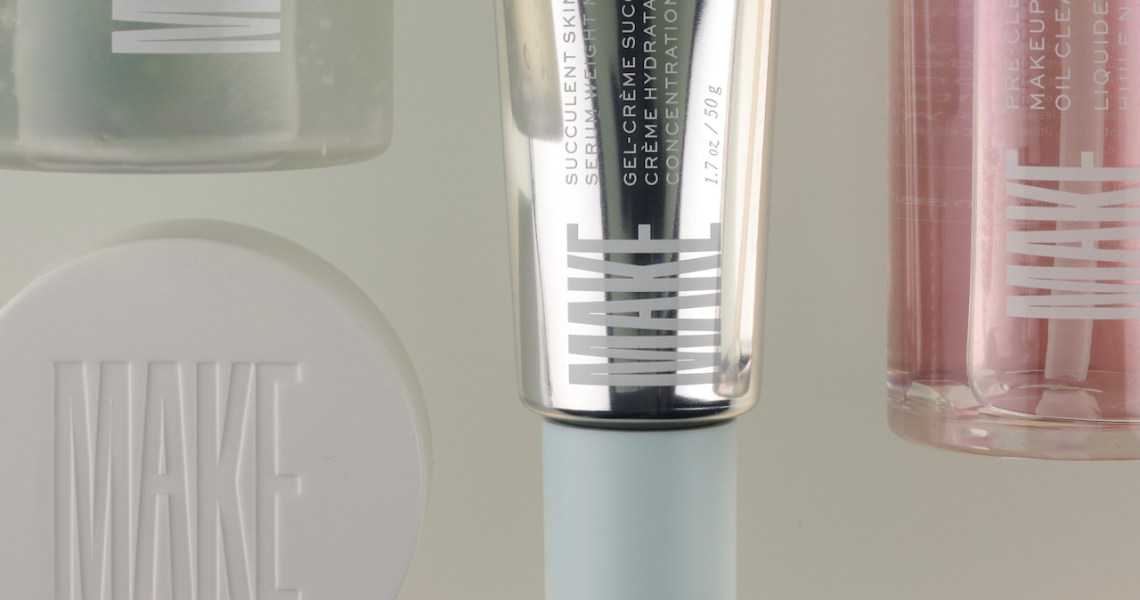When Ariana Mouyiaris and Mana Cosmetics founder Nikos Mouyiaris launched Make Beauty in 2013, in many ways it was a predecessor to the Glossiers of the world, which started coming to market in 2014. With its millennial packaging and cool vibe, Make looked like nothing on the market.
After a two-year hiatus, Make Beauty relaunches this week under new ownership. Ben Bennett, founder and CEO of incubator and investment firm The Center, in partnership with Carrie Barber, formerly of Violet Grey and Sephora, purchased Make late last year. The brand was available for sale after Nikos Mouyiaris’ death in 2019 and Traub’s acquisition of beauty manufacturer Mana Cosmetics in September 2020. Benette and Barber would not disclose the terms of deal.
“Make was ahead of its time. It had a big cult following and essential products that people loved. It wasn’t a huge brand by any means, but it was loved,” said Bennett, who explained that after Nikos Mouyiaris’ passing, Make was trying to establish its path forward. Bennett is best known for founding agency and incubator Hatch Beauty in 2010 before starting The Center in 2019. The Center’s brands include Naturium and Phlur.
Barber, who is co-owner and creative director of Make, said, “[Make] was one of the first New York beauty brands — bold, very cool and you wanted to be a part of it. They did a lot of things early and didn’t get credit for it.”
The new iteration of Make debuts with four skin-care products: a pre-cleanse fluid, a cleanser, a gel cream and a rice essence, with prices ranging from $24-$30. Unlike Make’s past life with retailers like Net-a-Porter, Revolve and Selfridges, the brand is relaunching DTC-only. Prior to the debut this week, Bennett and Barber removed older products from the above retailers.
Barber has a career behind the scenes in beauty, but this is her first foray as founder. As such, she is ready to emphasize her own personality. “[Being forward facing] is a part of my job now. Honestly, it’s been really cathartic for me to have to work through being shy and not so authentically forward; I’m very curated on Instagram,” she said. “I’m doing my best to sort of peel back the layers. It’s really important for people to know who is behind the brand.”
Arguably, it’s more challenging to resuscitate a beauty brand than start one from scratch in today’s market, but Barber plans to be respectful of Make’s DNA while pushing it forward. “The logo is so identifiable,” she said. “People know it, and there is history in that branding.”
The skin-care focus at launch is probably the best example of Make’s modern vision. Rather than staking a claim on a clean or natural positioning, Make has spent time establishing what it calls “L.E.N.I,” or lab-engineered natural ingredients. Barber said Make is using botanical and botanically-derived ingredients, as well as tested synthetic ingredients, to consider beauty’s environmental impact on ingredient sourcing. For launch, the brand will be using content and brand ethos to market on social platforms.
With these updates, Bennett believes a new customer will be coming to Make. “We know there is a consumer out there who is a quote-unquote clean consumer, and we love that consumer base. But there’s a large consumer base that’s focused on science, on skin-care formulation and on technology,” he said. “We want to utilize botanical and natural ingredients where it makes sense, but we’re not shying away or being unapologetic about leaning into science.”




